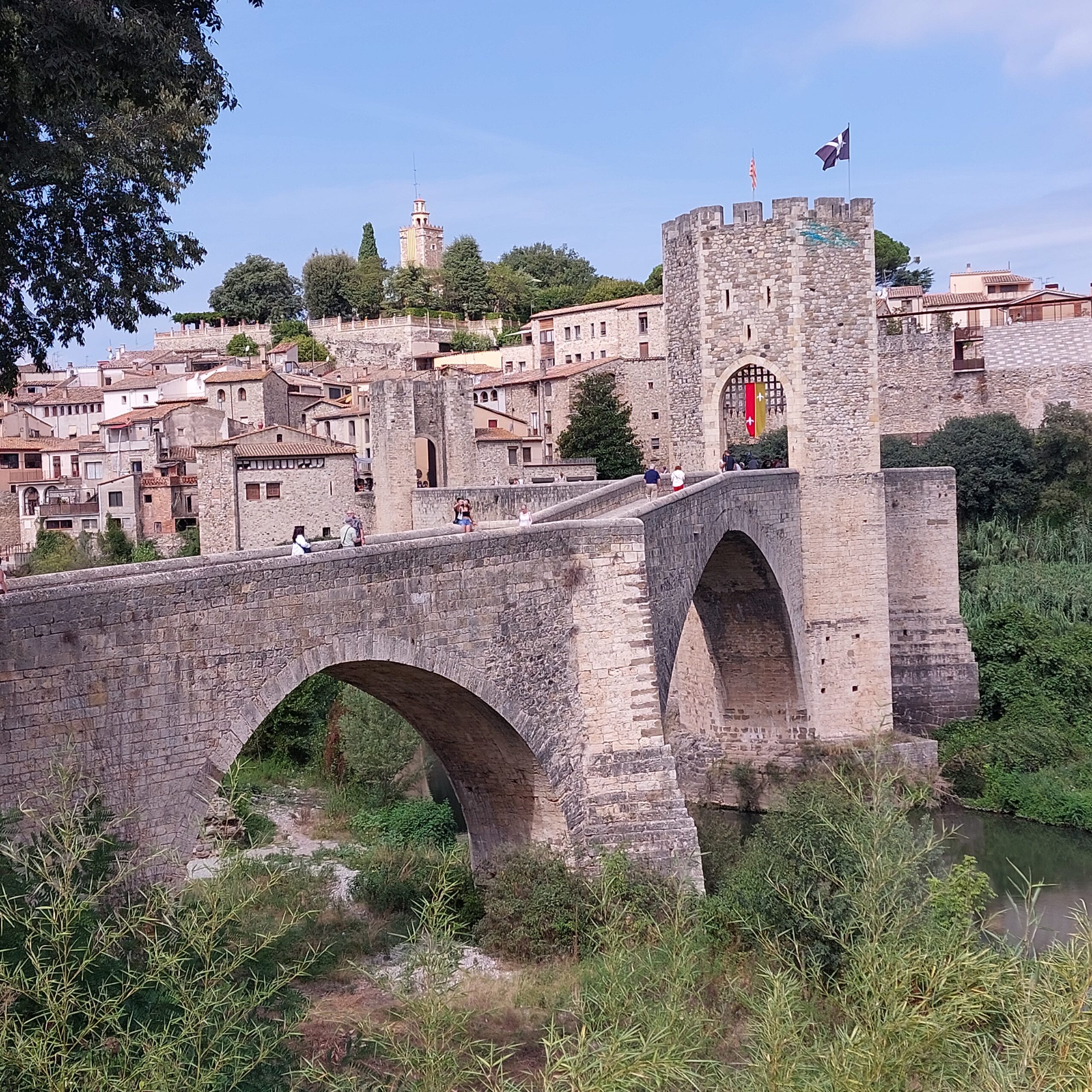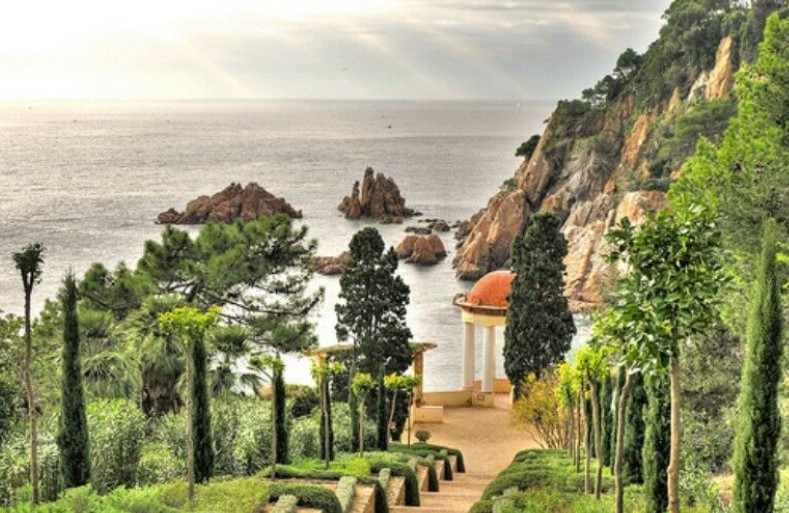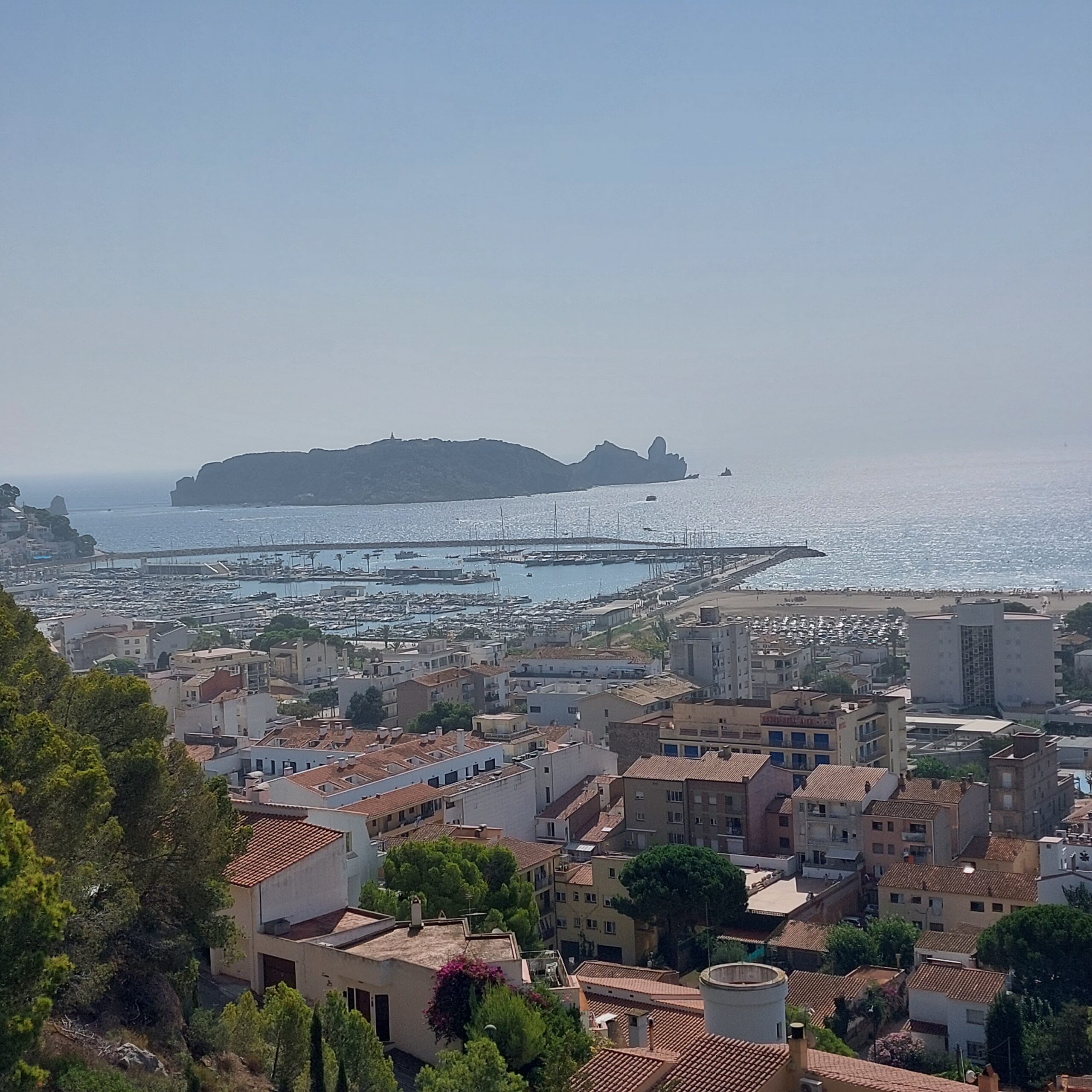Activities

Diving and Snorkling
L’Estartit is considered one of the most popular places in the entire Costa Brava for diving and snorkeling. This is undeniably due to the presence of the Medes Islands which are visible from all the terraces of the vacation homes of ‘Holiday Costa Brava’.
‘Vakantie Costa Brava’ itself organizes diving lessons and also has a boat available to sail to the Medes Islands. We also have all the necessary diving equipment.
The marine life at the Costa Brava is certainly diverse. Among other things, you can spot different species of bream, groupers, sea bass and moray eels. The latter species, which looks something like a snake, hides among the reefs. So it may take a while to find one. Furthermore, scorpion fish, barracudas, seahorses and octopuses also call this part of the Mediterranean their home. So there are plenty of interesting encounters awaiting you.

Cycling
The area around L’Estartit lends itself well to bicycle tours. For example, you can quite easily cycle north to visit the Greek and Roman excavations at Empuries. Both the bike ride and the destination itself are very worthwhile. You will find the excavations of Empúries on the north side of the village of L’Escala along the coast. As early as the 6th century BC, the Greeks founded a colony here, Emporion. Some time later they founded Néa Pólis, or new town, along the coast.
If you cycle south you will reach Pals, this village is like many other places in the area built on top of a hill, the inland part has a beautiful historic medieval center and has a part which is located on the coast, this part is called ‘Platje de Pals’.
The many routes are well marked and there are also several routes for mountain biking. Route maps are available everywhere in the towns but there are also several apps to download on your phone that show all the routes.

Golf Courses near L'Estartit
There are plenty of opportunities to experience golf, for all levels, on the most beautiful courses.
Less than ten minutes away, in Torroella de Montgri, the Pitch and Put course Gualta. A beautiful, varied 18-hole par 3 course, with tough bunkers and water challenges, doable for the beginner and definitely a thing for the experienced golfer.
A little further on we find the 36-hole course Emporda Golf Resort. A delight for the experienced golfer, this golf course hosted the European Championships a few years ago.
A few kilometers more towards Pals, there is the 18-hole golf course Platja de Pals.
If you really want to play at the top of the bill, you have towards Gerona the PGA Golf de Catalunya, a dream course for every golfer.
On each course there are rental options for golf sets and baby carriages. In short, something for everyone.
VSCB wishes you lots of golfing fun!

Hiking
Hiking trails in the natural park ‘Montgri’
The Natural Park ‘Montgri’ offers as many as 17 different hiking trails, ideal for discovering the precious nature and culture of Emporda! The total area is about 8,200 hectares divided into 8 villages. The Montgri massif consists of a limestone formation that forms a natural border between Alt Emporda and Baix Emporda. These are formed by 3 mountains: ‘La Montana de Ulla’, ‘La Montana del Montgri’ and ‘El Montpla’ and also by ‘La Roca Maura’ and ‘La Torre Moraxta’ which are less high. There are routes with long or short distances, and there are walkways along the coast that allow you to get to know the beaches and coves of the Costa Brava. A multitude of choices, therefore, for all levels and ages, whether you are fanatical about hiking or want to get to know the surrounding area with its local culture and history at your leisure.

Water parks
The water parks of the Costa Brava are among the best in Europe. In the region around L’Estartit you already have three great places:
which are unique in their kind.

Mini Golf
The Costa Brava is known to have a lot of places where you can play Mini Golf. In almost every city you will find a court where you can enjoy the game with your entire family. Every court has a lot of holes of varying difficulties from easy to more advanced. Each hole presents a new adventure, making every game unique and exciting.
Mini golf is the perfect activity for all ages, offering a delightful mix of fun, challenge, and relaxation. Whether you’re looking for a family outing or a friendly competition with friends, mini golf provides an enjoyable experience for everyone. It is a great way to spend time with your loved ones. Every putt will bring a smile to your face and every game will create lasting memories of your wonderful vacation!

Tennis, Padel, Trampolines, Mini Golf @ Mont Pla
Mont Pla is located near the centre of L’Estartit. At Mont Pla, there’s something for everyone to enjoy. Our facilities are designed to provide a fun and engaging experience for visitors of all ages. Here’s what you can look forward to:
- Mini Golf: Challenge yourself on our 18-hole mini golf course, perfect for a friendly competition or a relaxing game with family and friends.
- Trampolines: Kids and adults alike can have a blast on our trampolines, offering a great way to burn off some energy and enjoy some high-flying fun.
- Recreation Area: Our dedicated recreation area is perfect for the youngest visitors, ensuring they have a safe and enjoyable time.
- Tennis Courts: We have two quick tennis courts available for those who love to play or want to learn the sport.
- Paddle Courts: With four paddle courts, including one individual court, you can enjoy this popular sport in a well-maintained setting. Our paddle and tennis facilities are managed by Club Pàdel i Tennis Baix Empordà, ensuring top-quality experiences.
- Terrace: After all the activities, relax on our terrace with a refreshing drink or a tasty snack. It’s the perfect spot to unwind and enjoy the beautiful surroundings.
Whether you’re looking for a day of adventure or a place to relax, Mont Pla has it all. Come and create unforgettable memories with us!
Some picturesque villages and interesting museums to visit

Beautiful Besalú
Besalú, a town in the province of Girona, Catalonia, is a stunning example of medieval architecture and history. Nestled in the region of La Garrotxa, it is renowned for its well-preserved Romanesque bridge, the Pont Vell, which spans the Fluvià river and serves as a gateway to the town’s rich past. Visitors can explore cobbled streets and discover the remnants of a Sephardic quarter from the Middle Ages. The town’s civil architecture is highlighted by the Cùria Real and the Cornellà residence, while religious monuments such as the churches of Sant Pere, Santa María, and Sant Vicenç showcase a blend of Romanesque and Gothic elements. The church of Sant Julià, with its lavish 17th-century ornamentation, is also noteworthy. For those interested in Jewish history, the medieval public baths, once used for Hebrew ritual ablutions, are a must-see. Besalú’s proximity to the Costa Brava means that it is just a short journey away from the region’s iconic cliffs, beaches, and coves of golden sand, offering a perfect blend of cultural heritage and natural beauty.

Figueres
The Dalí Theatre-Museum, located in Salvador Dalí’s hometown of Figueres, Catalonia, Spain, stands as a testament to his unique vision and is one of the most visited museums in Spain. This museum, which Dalí himself had a hand in creating, is known for its surreal design, including the iconic glass geodesic dome that crowns the building. Visitors can explore a broad range of Dalí’s work, which not only includes his famous paintings but also sculptures, mechanical devices, and other curiosities. Dalí is even buried there, in a crypt below the stage of the former theatre, making it a site of pilgrimage for fans of his work. The museum’s collection is a deep dive into the artist’s imaginative universe, offering a comprehensive look at his artistic journey and the evolution of his style over the years.

Castell Gala-Dalí de Puból
The Castell Gala-Dalí de Puból, located in the Baix Empordà region of Catalonia, Spain, is a medieval castle that was the residence of the surrealist artist Salvador Dalí and his wife Gala. Dalí gifted the castle to Gala in the 1970s, and it became a place where he could indulge in his creative pursuits, designing the interior as a tribute to his muse and wife. Today, the castle is a museum open to the public, allowing visitors to explore the rooms and gardens that are steeped in history and art. The museum showcases personal belongings of the couple, art pieces, and furniture designed by Dalí himself, providing a unique insight into their private life and Dalí’s artistic vision.

Girona
Girona, a city steeped in rich history and culture, is the capital of the province of the same name within Catalonia, Spain. Nestled at the confluence of the Ter, Onyar, Galligants, and Güell rivers, Girona offers a unique blend of ancient charm and modern vibrancy. The city’s well-preserved medieval architecture, including the expansive Cathedral of Girona with the world’s widest Gothic nave, invites exploration and wonder. Visitors can also delve into the city’s Jewish heritage at the Jewish Quarter, one of the best-preserved in Europe. For those interested in cinematic history, the Cinema Museum Girona provides a deep dive into the world of film. With its rich archaeological sites like the Banys Arabs and the allure of the Maso House, Girona is a treasure trove for enthusiasts of history and architecture alike.

Barcelona
Barcelona, the vibrant capital of Catalonia, is a city brimming with culture, architecture, and history. At the top of the list is the iconic Sagrada Família, Antoni Gaudí’s unfinished masterpiece, which has been under construction for over a century and is a stunning example of modernist architecture. Park Güell, another of Gaudí’s creations, offers a magical escape with its intricate mosaics and panoramic views of the city. For a taste of history, the Gothic Quarter beckons with its narrow medieval streets, leading to the impressive Barcelona Cathedral. Art enthusiasts can explore the Picasso Museum, which houses one of the most extensive collections of artworks by the 20th-century Spanish artist Pablo Picasso. Lastly, for those looking to enjoy the Mediterranean climate, Barcelona’s beaches provide a perfect spot for relaxation and leisure. Each of these attractions captures the essence of Barcelona’s unique blend of traditional and modern influences.

The ruins of Empúries
The ruins of Empúries, located on the Costa Brava in Catalonia, Spain, are a fascinating testament to the region’s rich history. This archaeological site uniquely showcases the remnants of both a Greek city, Empòrion, and a Roman city, Emporiae, coexisting in the same location. Founded by Greek colonists from Phocaea in 575 BC, Empúries was a major trading and cultural hub. It later became the first Roman settlement on the Iberian Peninsula during the Second Punic War in 218 BC. Visitors to the site can explore the remains of the Greek market, the Roman forum, and an early Christian basilica, among other historical treasures. The ruins not only offer a glimpse into ancient urban development but also tell the story of ten centuries of interactions that forever transformed the indigenous Iberian peoples.

Cadaqués
Cadaques is counted among the country’s most beautiful villages in Spain. If you visit this former fishing village just south of the French border, you will only agree. Picturesque Cadaques is located in nature reserve Cap de Creus, sandwiched between the mountains and the Mediterranean Sea. It is mainly its white houses with blue shutters and traditional fishing boats bobbing around in the harbour that characterise it. Salvador Dalí lived near this village and liked to come here for inspiration. Definitely Cadaques will have a refreshing effect on you too!
Nature

Botanical garden Cap Roig in Palafrugell
The Jardí Botànic de Cap Roig, located in Palafrugell, is a stunning botanical garden that offers a blend of botany, history, landscape, and art. Created in 1927 by the Woevodsky couple, it showcases over 1,000 plant species from regions around the world with a Mediterranean climate. The garden is not only a haven for plant lovers but also a cultural hub, hosting the Cap Roig Festival, one of the main music festivals on the Costa Brava. Visitors can explore the iconic castle made of local iron-rich rock and participate in guided tours and educational activities designed for all ages, promoting the appreciation and conservation of plant heritage.

Botanical garden of Blanes
The Marimurtra Botanical Garden, perched atop the cliffs of Blanes, offers a breathtaking panorama of the Mediterranean coastline. This garden is a haven for over four thousand plant species, many of which are exotic, and includes remarkable specimens notable for their age or size. Created by Carl Faust, a German businessman and nature enthusiast, Marimurtra is a testament to his dedication and passion for botany. Visitors can explore diverse plant collections from arid regions of South Africa and Central America, as well as large subtropical plants like palms and araucarias. The garden is not only a place of beauty but also a center for scientific research and education, reflecting Faust’s vision of a sanctuary where knowledge and nature coexist harmoniously.

Natural Park of Montseny
Between the Catalan cities of Barcelona and Girona, an oasis of nature awaits you. There, a huge green granite massif stretches out where you can admire a wide variety of trees and plants. The Parc Natural de Montseny is part of this larger nature reserve and lies at its heart. Since 1978, the park has been listed as a natural heritage site on UNESCO’s World Heritage List. In 2014, its size was further expanded to an area of 50,000 hectares. Parc Natural de Montseny belongs to a network of protected natural areas that together form a large green zone.

Sant Llorenç del Munt i l'Obac Natural Park in Barcelona
To the north of Barcelona, this natural space is practically paradise, especially if you like caving – there are over 300 caves and chasms to be found here. The park is formed of two different mountain ranges, which come together in the north at Estellanes hill. Its highest peaks are La Mola (1104 metres) and Montcau (1057 metres).
In fact, one of the most popular trips that can be taken in this park is a climb up to the summit of La Mola (this takes about one and a half hours). When you reach the top, you’ll find the Sant Llorenç del Munt i l’Obac Romanesque monastery. The church is a Lombard-style building from the 11th century. It currently hosts a restaurant, and travellers can visit the shrine.

The Medes Islands
The Medes Islands, or Illes Medes, are a small and craggy group of seven islets located in the Costa Brava area of the northwestern Mediterranean Sea. These islands are a part of Catalonia, Spain, and are known for their rich history and ecological significance. Historically, the Medes Islands have seen a fortress built by the Equestrian Order of the Holy Sepulchre of Jerusalem in the 15th century, pirate attacks, and fortifications during the Napoleonic Wars. Today, they are a protected marine reserve, renowned for their diverse marine life and as a popular scuba diving destination. The largest island, Meda Gran, features a 19th-century lighthouse, and the archipelago is home to a variety of Mediterranean vegetation and wildlife.
From your apartment at `Vakantie Costa Brava` you have a unique view on the island group. The picture is taken from one of the apartments.
